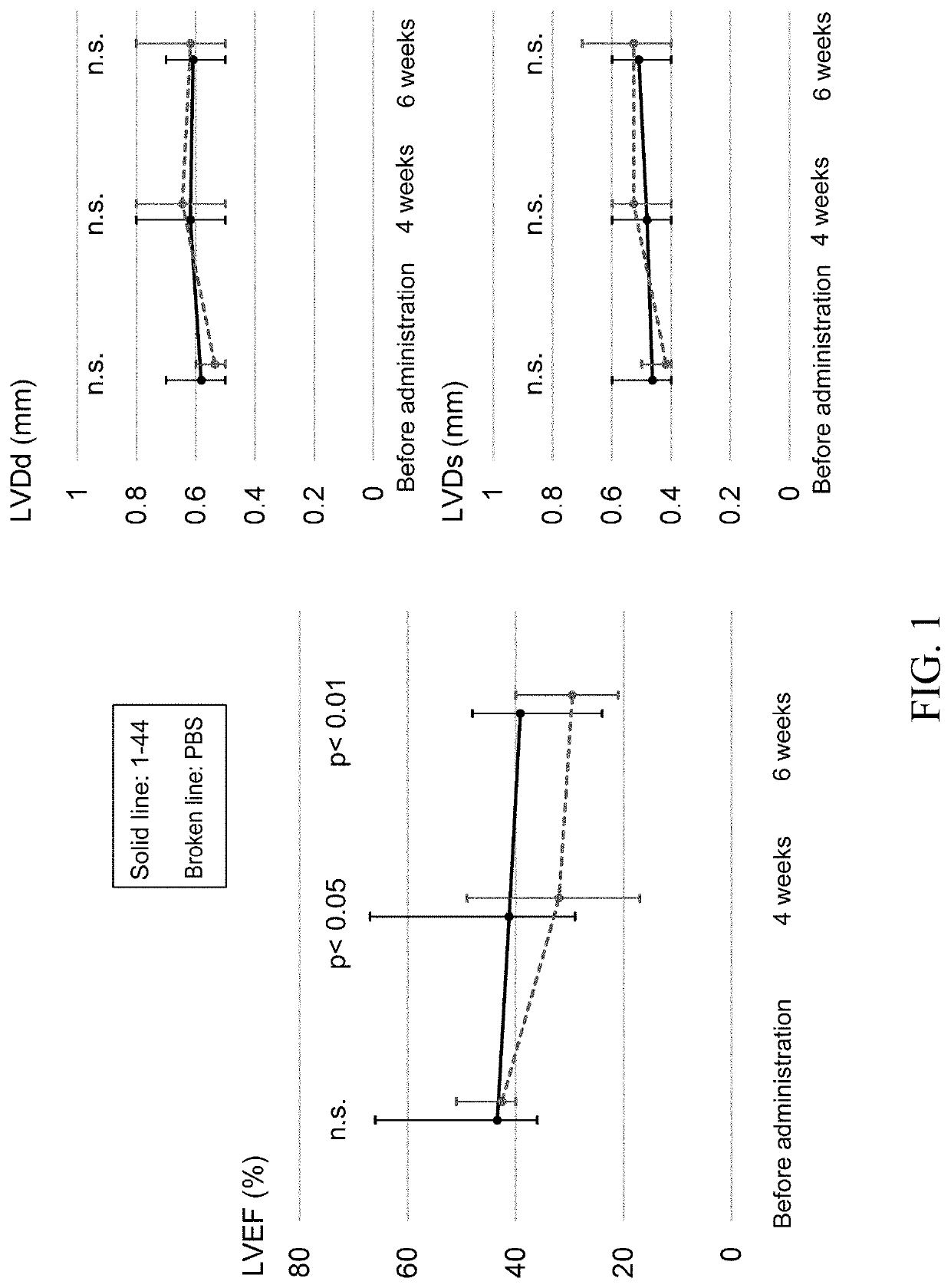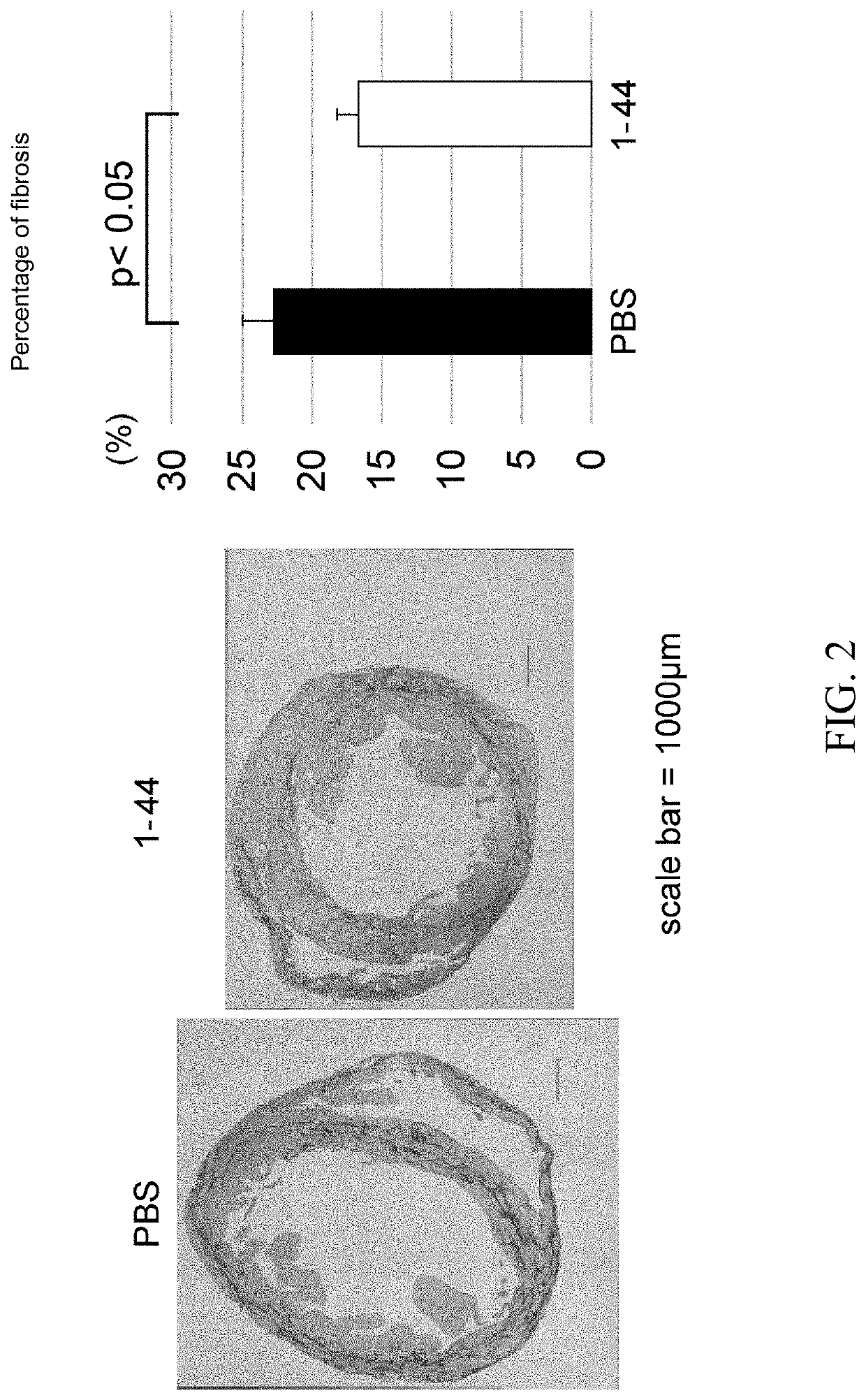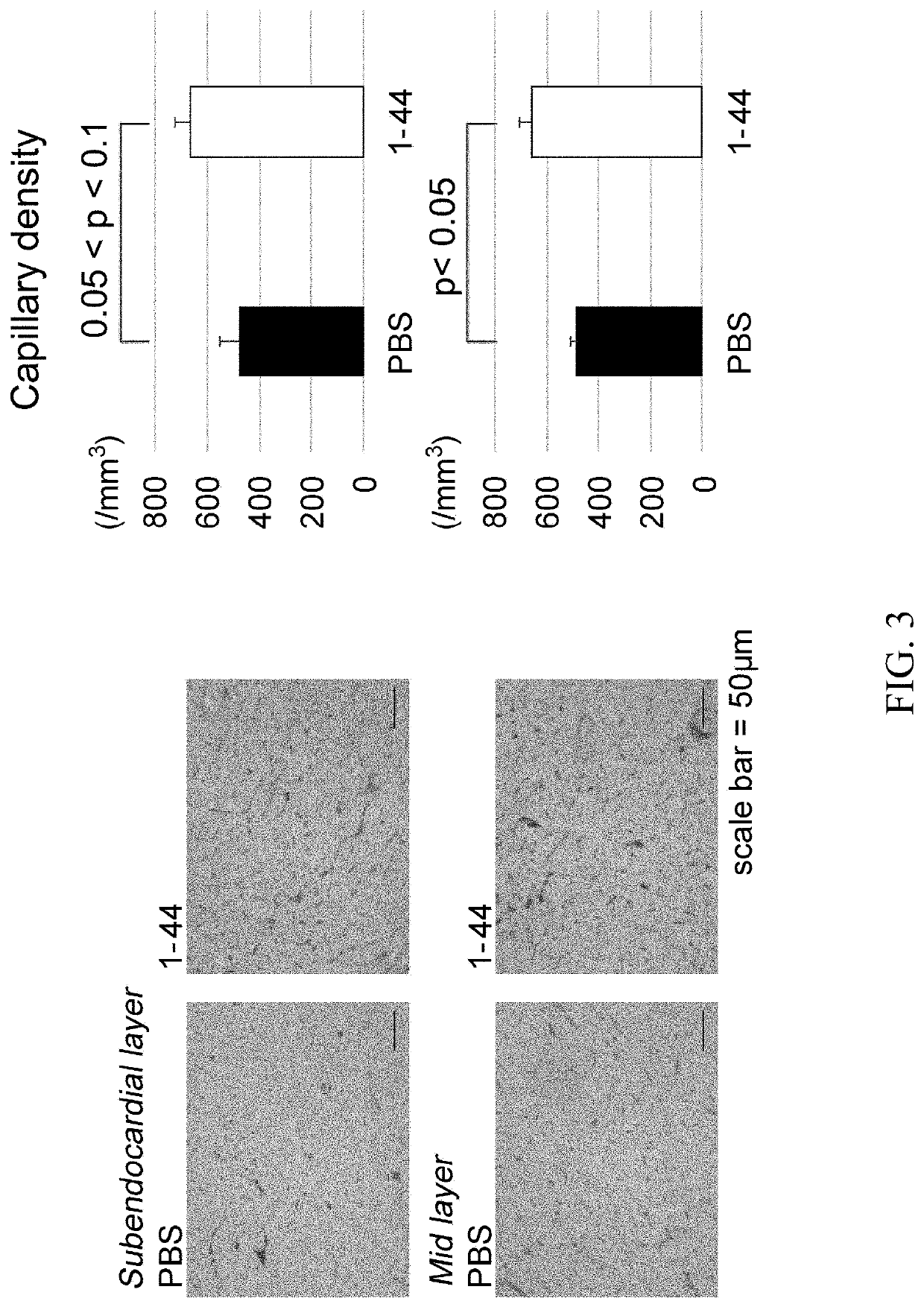Therapeutic agent for cardiomyopathy, old myocardial infarction and chronic heart failure
- Summary
- Abstract
- Description
- Claims
- Application Information
AI Technical Summary
Benefits of technology
Problems solved by technology
Method used
Image
Examples
example 1
[Example 1] Efficacy Evaluation of an HMGB1 Fragment Peptide for Dilated Cardiomyopathy
(1) Materials and Methods
[0092]J2N-k hamsters (18-week-old, male, 20 animals in total), which are model animals of dilated cardiomyopathy, were obtained from Japan SLC, acclimated for 2 weeks, and then used for experiments. J2N-k hamsters spontaneously develop dilated cardiomyopathy due to deletion mutations in the 8-sarcoglycan gene (specifically, cardiomyocyte shedding and fibrosis begin around 5 weeks of age, cardiomegaly and cardiac dysfunction appear at approximately 20 weeks of age, and eventually they die of congestive heart failure at approximately 1 year. J Biochem. 2003 August; 134(2):269-76). Also, a peptide consisting of amino acid residues 1-44 (SEQ ID NO: 1) of the human HMGB1 protein was chemically synthesized by a solid-phase method. Hereinafter, the peptide is referred to as the HMGB1 peptide (1-44), and is abbreviated as “1-44” in the drawing corresponding to the Examples.
[0093]J...
example 2
[Example 2] Efficacy Evaluation of the HMGB1 Fragment Peptide for Dilated Cardiomyopathy (Long-Term Observations)
(1) Materials and Methods
[0108]As in Example 1, twenty J2N-k hamsters were prepared and divided into the HMGB1 peptide (1-44)-treated group (n=11) and the PBS-treated group (control, n=9), and treatment was begun at 20 weeks of age. Administration of the test substance was carried out by injecting a solution of the HMGB1 peptide (1-44), which has been adjusted to a concentration of 1 mg / ml with PBS as the vehicle, into the external jugular vein at a dose of 3 ml / kg (3 mg / kg as the peptide dosage) once daily for four consecutive days. In the control group, PBS was injected into the external jugular vein at a dose of 3 ml / kg once a day for four consecutive days. Evaluation of the cardiac function and survival rate was continued thereafter while rearing the hamsters under normal conditions.
(2) Items for Evaluation
i) Cardiac Function
[0109]Echocardiography was performed prior ...
example 3
[Example 3] Efficacy Evaluation of the HMGB1 Fragment Peptide on Improving the Cardiac Function after Old Myocardial Infarction
(1) Materials and Methods
[0113]SD rats (7-week-old, male, body weight of approximately 250 g) were anesthetized with the inhalation anesthetic sevofrane (or isoflurane) and intubated endotracheally after adequate suppression was achieved, and deep anesthesia was maintained with the inhalation anesthetic. A thoracotomy was performed in the supine position at the left fourth intercostal space, and the proximal portion of the left anterior descending coronary artery was ligated with 6-0 prolene sutures to create a broad-area myocardial infarction model. The cardiac function was evaluated by echocardiography 2 weeks after the infarction was made, and cases in which extensive infarction was obtained (LVEF<50%) were used as old myocardial infarction model rats (17 animals in total). Similar to the above examples, the HMGB1 peptide (1-44) consisting of SEQ ID NO: 1...
PUM
| Property | Measurement | Unit |
|---|---|---|
| Fraction | aaaaa | aaaaa |
Abstract
Description
Claims
Application Information
 Login to View More
Login to View More - R&D
- Intellectual Property
- Life Sciences
- Materials
- Tech Scout
- Unparalleled Data Quality
- Higher Quality Content
- 60% Fewer Hallucinations
Browse by: Latest US Patents, China's latest patents, Technical Efficacy Thesaurus, Application Domain, Technology Topic, Popular Technical Reports.
© 2025 PatSnap. All rights reserved.Legal|Privacy policy|Modern Slavery Act Transparency Statement|Sitemap|About US| Contact US: help@patsnap.com



